Tamron 17-50 mm f/4 Di III VXD
4. Image resolution
Let's see how the Tamron 17-50 mm f/4 Di III VXD compares – its results in the frame centre at 17, 33, and 50 mm presents graph below.
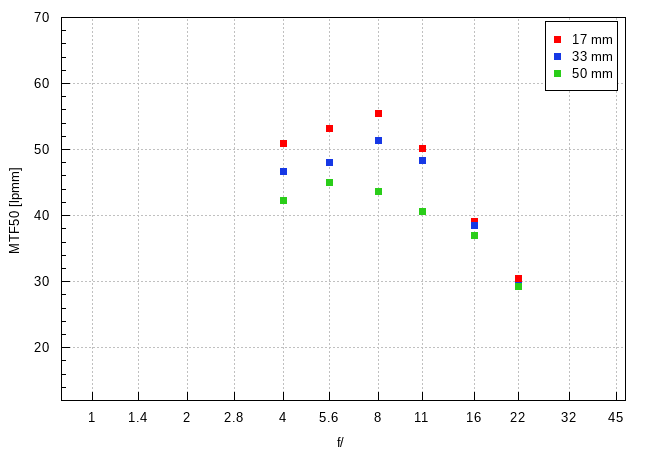
When it comes to the frame centre, several things stick out. First of all, you see noticeable differences between particular focal lengths and image quality decreases with the increase of the focal length's value. Secondly, the performance of the lens is hardly impressive – image quality is good and only good, nothing more. Fortunately the lens doesn't have any weak points in this category either, because even at the maximum relative aperture you land safely above the decency level at any focal length.
Please Support UsIf you enjoy our reviews and articles, and you want us to continue our work please, support our website by donating through PayPal. The funds are going to be used for paying our editorial team, renting servers, and equipping our testing studio; only that way we will be able to continue providing you interesting content for free. |
- - - - - - - - - - - - - - - - - - - - - - - - - - - - - - - - - - - - - - - - - - - - - - - -
Now let's check how the situation changes as you pass to the edge of the APS-C sensor – an appropriate graph you can find below.
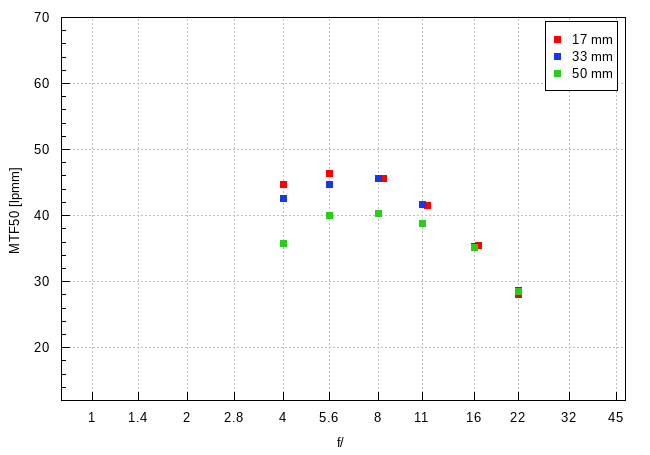
Here the hierarchy is preserved even though the difference between 17 and 33 mm decreased. Both focal lengths provide a sensible image quality up from the maximum relative aperture. Unfortunately you can't say the same thing about the 50 mm focal length that requires a stopping down to f/5.6 in order to ensure that sensible image quality.
Now the time has come to check the edge of full frame and we admit, for a lens with such original parameters, the bar is raised really high.
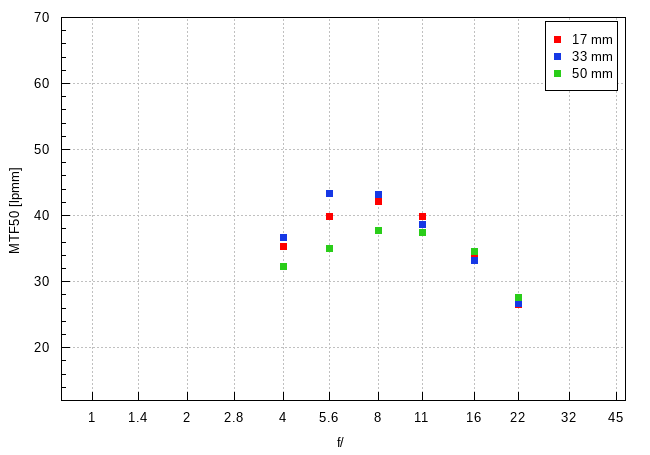
One glance at the graph above and you know that the Tamron didn't manage to jump that bar in many places. First of all the constructors gave up on the maximum focal length – it has problems with reaching the decency level even on stopping down. In case of shorter focal lengths the decency level is not reached at the maximum relative aperture but stopping down the aperture by 1 EV solves the problem. Of course the performance still remains mediocre but, as long as you stick to the aperture range from f/5.6 to f/11.0, you are able to get more or less sharp images across the frame.
At the end of this chapter we would like to present some crops taken from our test photos, saved as JPEG files alongside the RAW files, used for the analysis above.
| A7R IIIa, JPEG, 17 mm, f/8.0 |
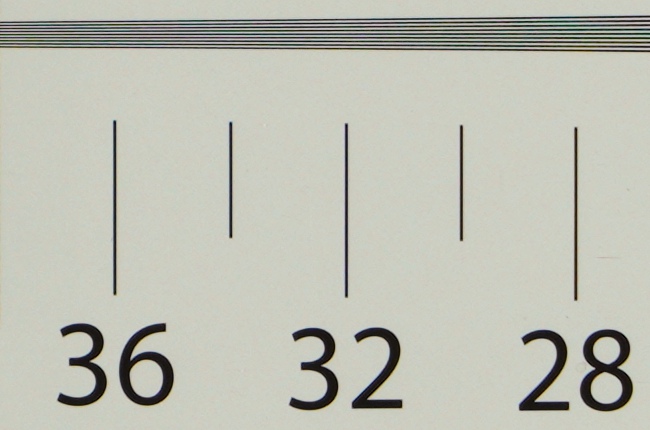 |
| A7R IIIa, JPEG, 50 mm, f/4.0 |
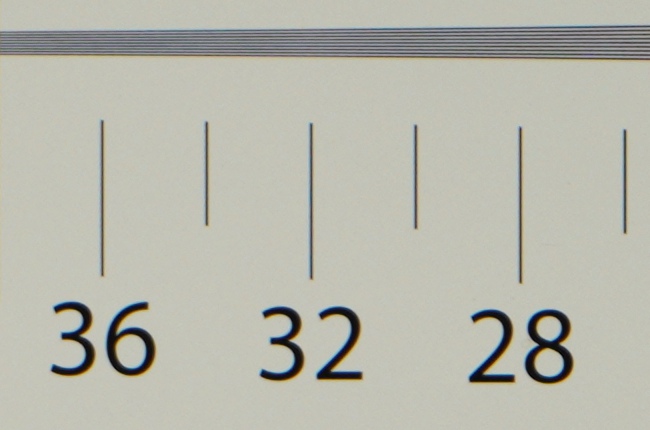 |






